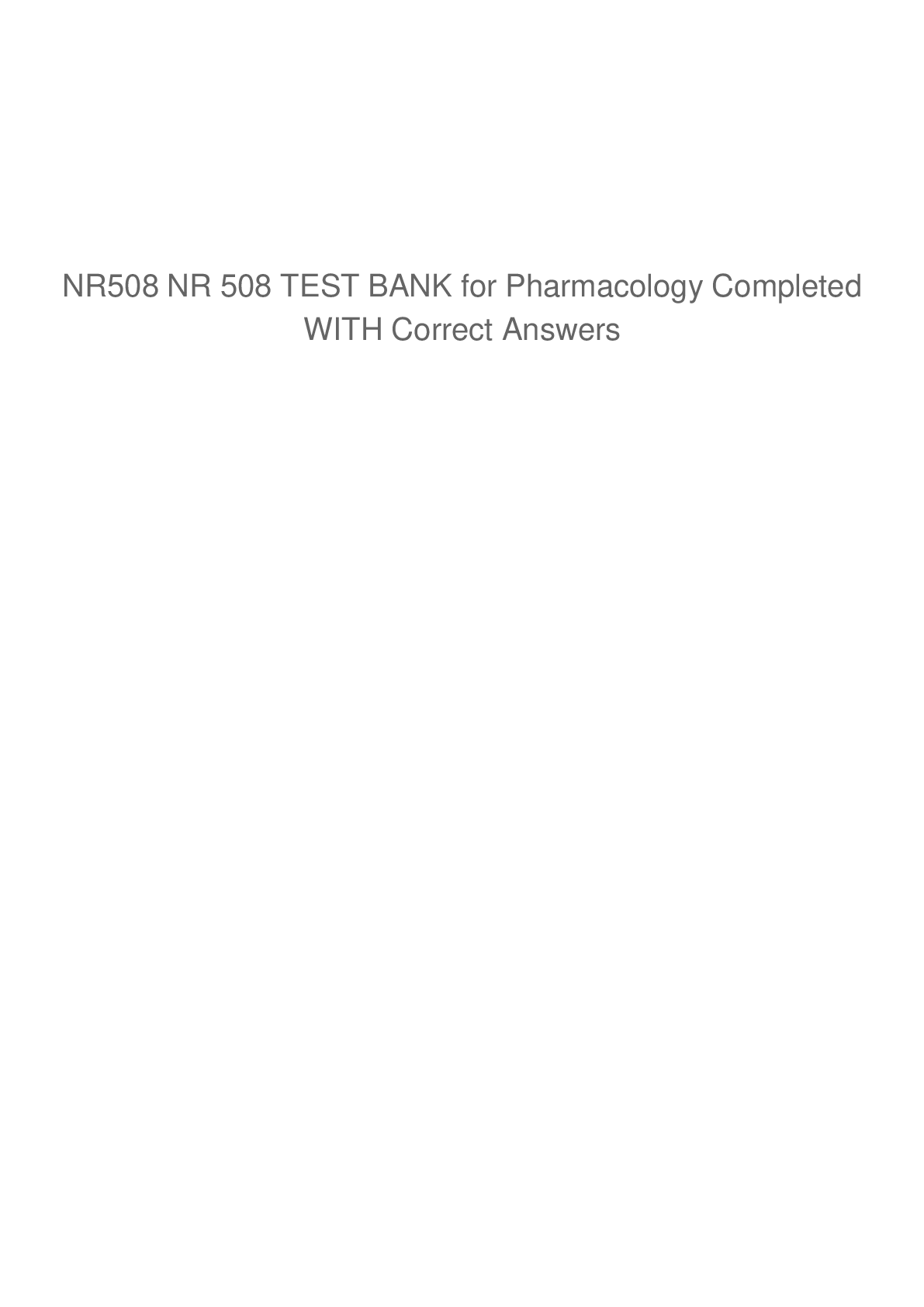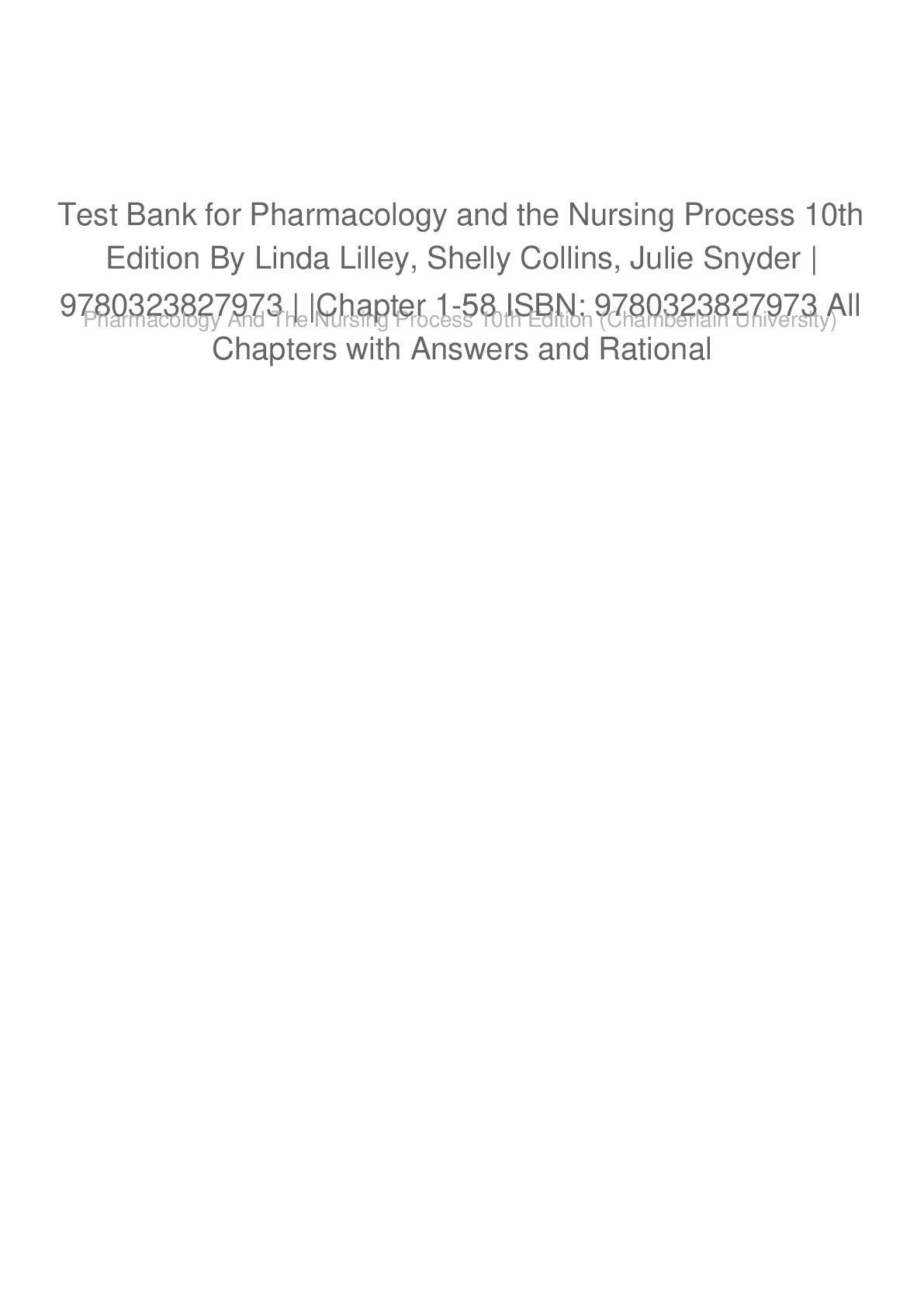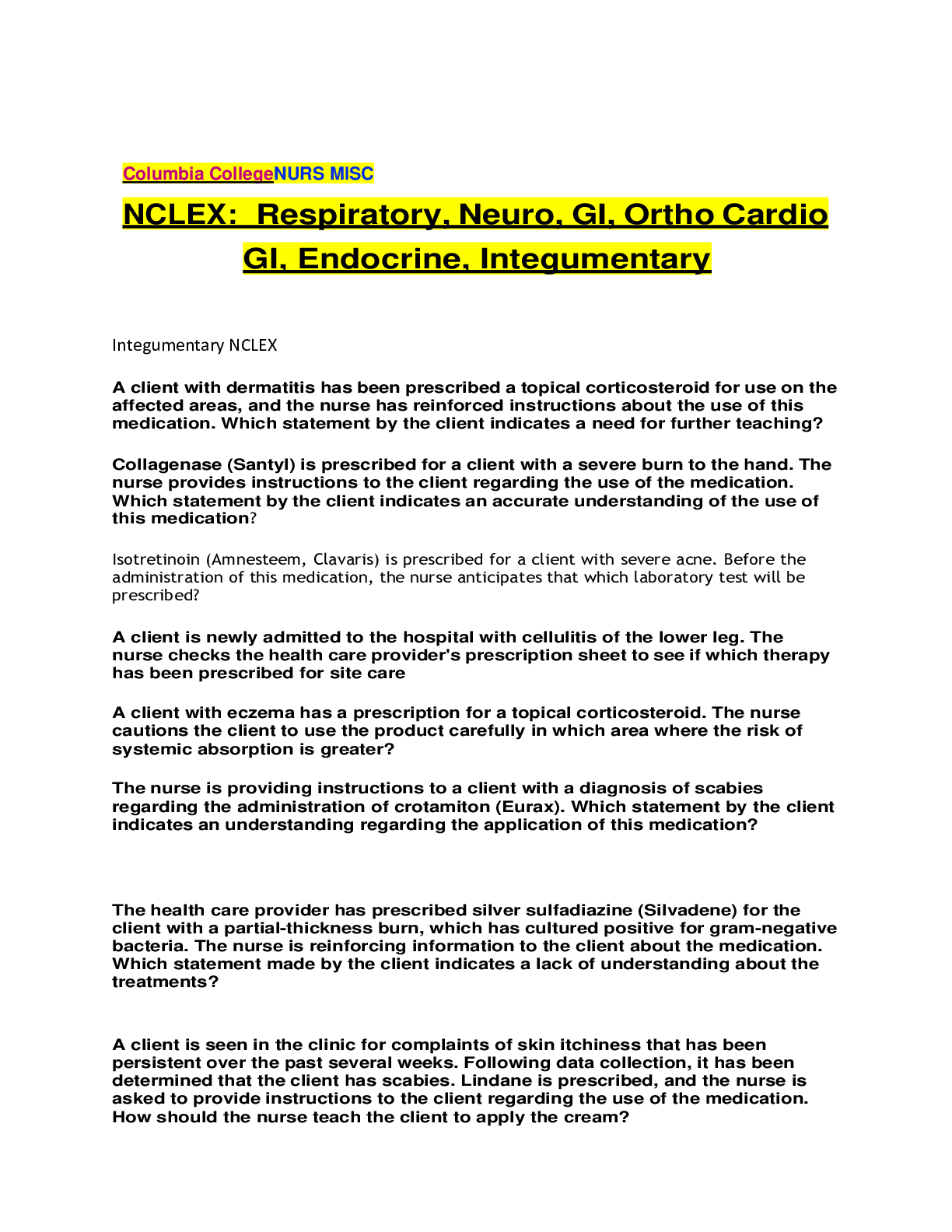Pharmacology > TEST BANK > NR508 NR 508 TEST BANK for PHARMACOLOGY Completed with 100% correct answers (All)
NR508 NR 508 TEST BANK for PHARMACOLOGY Completed with 100% correct answers
Document Content and Description Below
Table of Contents: Chapter 01: Prescriptive Authority and Role Implementation: Chapter 02: Historical Review of Prescriptive Authority: The Role of Nurses (NPs, CNMs, CRNAs, and CNSs) and Physic... ian Assistants Chapter 03: General Pharmacokinetic and Pharmacodynamic Principles Chapter 04: Special Populations: Geriatrics Chapter 05: Special Populations: Pediatrics Chapter 06: Special Populations: Pregnant and Nursing Women Chapter 07: Over-the-Counter Medications Chapter 08: Complementary and Alternative Therapies Chapter 09: Establishing the Therapeutic Relationship Chapter 11: Evidence-Based Decision Making and Treatment Guidelines Chapter 12: Design and Implementation of Patient Education Chapter 13: Dermatologic Agents Chapter 14: Eye, Ear, Throat, and Mouth Agents Chapter 15: Upper Respiratory Agents Chapter 16: Asthma and Chronic Obstructive Pulmonary Disease Medications Chapter 17: Hypertension and Miscellaneous Antihypertensive Medications Chapter 18: Coronary Artery Disease and Antianginal Medications Chapter 19: Heart Failure and Digoxin Chapter 20: Beta-Blockers Chapter 21: Calcium Channel Blockers Chapter 22: ACE Inhibitors and Angiotensin Receptor Blockers Chapter 23: Antiarrhythmic Agents Chapter 24: Antihyperlipidemic Agents Chapter 25: Agents that Act on Blood Chapter 26: Antacids and the Management of GERD Chapter 27: Histamine-2 Blockers and Proton Pump Inhibitors Chapter 28: Laxatives Chapter 29: Antidiarrheal Chapter 30: Antiemetics Chapter 31: Medications for Irritable Bowel Syndrome and Other Gastrointestinal Problems Chapter 32: Diuretics Chapter 35: Acetaminophen Chapter 36: Aspirin and Nonsteroidal Anti-inflammatory Drugs Chapter 37: Disease-Modifying Antirheumatic Drugs and Immune Modulators Test Bank Chapter 38: Gout Medications Chapter 39: Osteoporosis Treatment Chapter 40: Muscle Relaxants Chapter 41: Medications for Attention-Deficit/Hyperactivity Disorder Chapter 42: Medications for Dementia Chapter 43: Analgesia and Pain Management Chapter 44: Migraine Medications Chapter 45: Antiepileptics Chapter 46: Antiparkinson Agents Chapter 47: Antidepressants Chapter 47: Antidepressants Chapter 48: Antianxiety and Insomnia Agents Chapter 49: Antipsychotics Chapter 50: Substance Abuse Chapter 51: Glucocorticoids Chapter 52: Thyroid Medications Chapter 53: Diabetes Mellitus Agents Chapter 60: Cephalosporins Chapter 62: Macrolides Chapter 63: Fluoroquinolones Chapter 65: Sulfonamides Chapter 68: Antiretroviral Medications Chapter 70: The Immune System and Immunizations Chapter 72: Smoking Cessation Chapter 73: Vitamins and Minerals Chapter 01: Prescriptive Authority and Role Implementation: Tradition vs. Change Test Bank MULTIPLE CHOICE 1. Which of the following has influenced an emphasis on primary care education in medical schools? a. b. Changes in Medicare reimbursement methods recommended in 1992 Competition from nonphysicians desiring to meet primary care shortages c. The need for monopolistic control in the marketplace of primary outpatient care d. The recognition that nonphysicians have variable success providing primary care ANS: A The Physician Payment Review Commission in 1992 directly increased financial reimbursement to clinicians who provide primary care. Coupled with a shortage of primary care providers, this incentive led medical schools to place greater emphasis on preparing primary care physicians. Competition from nonphysicians increased coincidentally as professionals from other disciplines stepped up to meet the needs. Nonphysicians have had increasing success at providing primary care and have been shown to be safe and effective. DIF: Cognitive Level: Remembering (Knowledge) REF: 2 2. Which of the following statements is true about the prescribing practices of physicians? a. b. Older physicians tend to prescribe more appropriate medications than younger physicians. Antibiotic medications remain in the top five classifications of medications prescribed. c. Most physicians rely on a ―therapeutic armamentarium‖ that consists of less than 100 drug preparations per physician. d. The dominant form of drug information used by primary care physicians continues to be that provided by pharmaceutical companies. ANS: D Even though most physicians claim to place little weight on drug advertisements, [Show More]
Last updated: 3 weeks ago
Preview 5 out of 210 pages

Loading document previews ...
Buy this document to get the full access instantly
Instant Download Access after purchase
Buy NowInstant download
We Accept:

Reviews( 0 )
$22.00
Can't find what you want? Try our AI powered Search
Document information
Connected school, study & course
About the document
Uploaded On
Mar 22, 2025
Number of pages
210
Written in
Additional information
This document has been written for:
Uploaded
Mar 22, 2025
Downloads
0
Views
6



 ans.png)

.png)
 (1).png)








